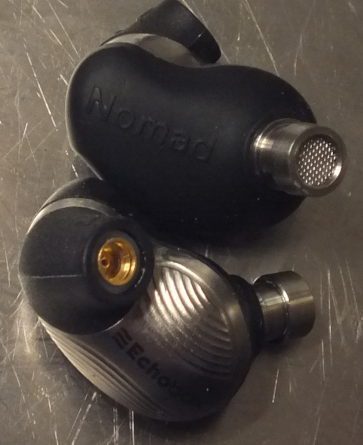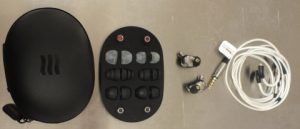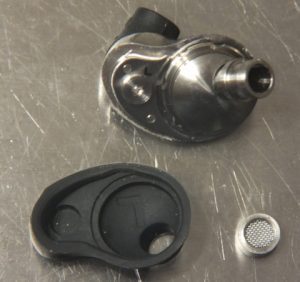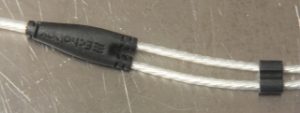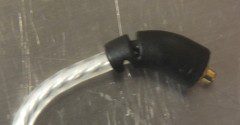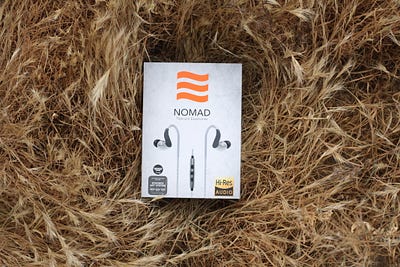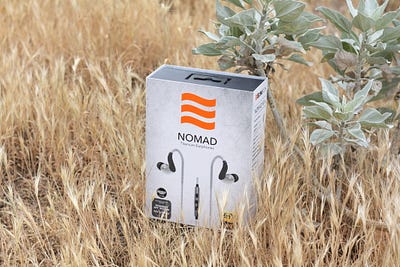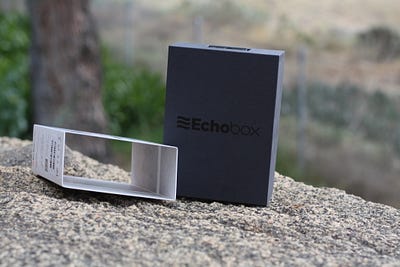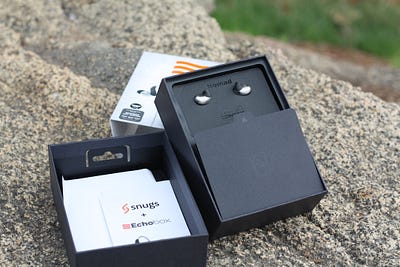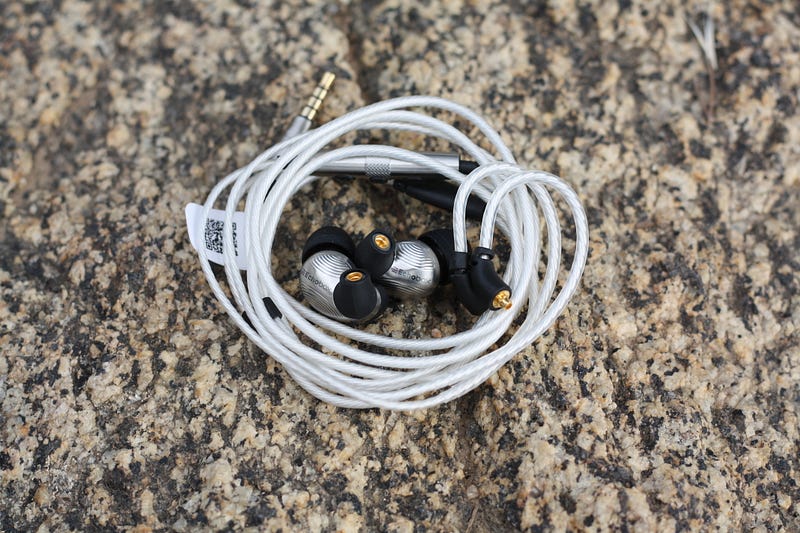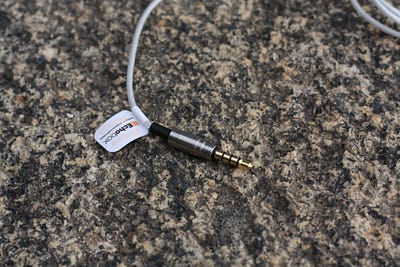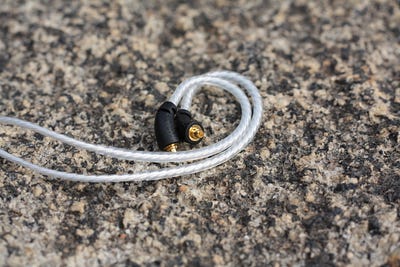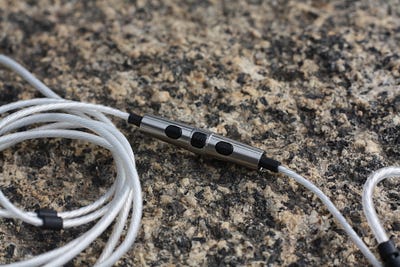Greetings!
Today we're checking out Echobox's new flagship earphone, the Nomad N1[a].
A couple years back I had the chance to check out Echobox's first earphone, the Finder X1. It impressed with it's nigh-invincible yet comfortable titanium shells and hyper detailed sound output from PEEK dynamic drivers that could be tuned with the included filters. It remained a benchmark product in my review process for quite a while. Late last year, Echobox expanded their lineup with a new entry level model, the Traveler, and a new flagship, the Nomad, with the Finding settling in as their mid-range offering.
Having spent over a month and many hours with the Nomad, it's safe to say that it's a noticeable step up from the still excellent Finder, and a competitive flagship that confidently represents the brand.
Let's take a closer look.
Disclaimer:
The Nomad was provided complimentary of Echobox in exchange for a fair and impartial review. I am not receiving any monetary compensation and all views and opinions within this review are my own. They are not representative of Echobox or any other entity.
At the time of this review the Nomad retailed for 249.00 USD and could be purcahsed with an Andoird or iPhone specific inline control module. This review is of the Android [a] version:
https://echoboxaudio.com/products/nomad
Be sure to check out Echobox’s social media platforms as well;
Instagram /
Twitter /
Facebook
Source:
For at home use the Nomad was powered by a TEAC HA-501 desktop amp with my Asus FX53V laptop sourcing music. During gaming, audio was piped through to the HA-501. For portable use it was paired with an LG G5, Shanling M1, HiFiMan MegaMini, or HiFi E.T. MA8, all of which easily brought it up to listening volume. The Nomad doesn't need to be amped, but it does sound best through a warm source. Like the Finder, this earphone has a bright signature.
Personal Preferences:
I listen primarily to various EDM sub-genres (liquid drum and bass, breakbeat, drumstep, etc.), hip hop, and classic rock. While I enjoy a variety of signatures in my headphones I generally lean towards slightly warm with elevated treble and sub-bass, an even and natural mid-range response, with reduced mid-bass. The HiFiMan RE800, Brainwavz B400, and thinksound On2 offer examples of signatures I enjoy. I generally listen at very low volumes, so keep this in mind when reading my thoughts on how an earphone sounds.
Specifications:
- Driver: 9.2mm PEEK (Polyether Ether Ketone) dynamic
- Frequency Response: 5Hz – 60kHz
- Sensitivity: 96dB/mW
- Impedance: 22ohm
- THD: <1%
- Microphone Sensitivity: -42 +/- 3dB
Packaging and Accessories:
Anyone that follows my reviews knows I value a quality unboxing experience and a solid accessory kit. Making a good first impression is important, and Echobox doesn't disappoint.
The exterior sheath is made from a very dense cardboard stock and is covered with a unique texture that looks reminiscent of marble or some other similar stone. On the front at the top is the bright orange Echobox logo, below which rests the model information and an image of the Nomad's ear pieces and control module. You also find the Hi-Res logo as well as a quick image of their tuning filters which they call “Echobox Aft System”. Just above that image is notification that you'll find an offer for Snugs custom ear tips inside. On the left of the sheath is a wire frame image of the included carrying case and a glimpse of the tip organizer inside, along with a few bar codes. To the right are the specifications and accessories lists. On the rear you are presented with the company's business ethos. The most important aspect to take away from this are their goals for their products; to “make great sounding audio products that are well built and affordable.”; and that they donate 1% of all their profits to charities that use music to better the world. Cool. Lastly, you're provided a few bullet points on some of the Nomad's features; PEEK diaphragms, titanium shells, silver plated wires, and their tuning system which enables some customization of the sound.
Removing the sheath reveals a matte black box beneath. It is completely barren save for the Echobox logo printed in a contrasting glossy black. Inside the ear pieces are proudly in display in a tailored holster, under which lays the cable neatly wrapped. Beneath a separate flap is the same excellent clamshell carrying case included with the Finder (sans a mesh pocket on one side) which contains the tip/filter organizer, spare tips, and filters. Finally, you are also provided a manual, warranty card, Snugs offer, and a sheet of paper containing links to their social media pages. The package is pretty darn comprehensive. In all you get:
- Nomad N1 earphones
- Removable silver-plated cable with MMCX connectors
- Crush-resistant clamshell carrying case
- Rubber tip/filter organizer
- Comply T400 Isolation tips (1 pair)
- Tri-flange silicone tips (m)
- Bi-flange silicone tips (m)
- Black single flange silicone tips (s/l)
Clear single flange silicone tips (s/l)
- Filters (bass, reference, treble)
The single flange tips get special mention because they're not your average tip. On first glance I thought they were simply a re-colored version of the tips that came with the Finder X1. Not a bad thing because those tips were great. These aren't those though. Anyone familiar with Spinfits will be right at home here, just imagine them crafted from a significantly more flexible silicone. For me they work amazingly well, though some will find them a little flimsy. I also find the absence of a medium size an odd decision, though the included large tips are nearly the same size as mediums from other brands.
Build, Comfort, and Isolation:
The Nomad features unique, low profile titanium shells. The exterior features are reminiscent of the growth lines on a bivalve seashell, emanating from the Echobox branding set just above centre. The interior portion that rests against your ears is covered in a thin but substantial layer of removable, soft, cushy silicone. In the winter, this will provide relief from what would otherwise be a freezing cold earphone resting in your ear. There are plastic shafts extending upwards containing the MMCX input ports, while titanium nozzles extend towards your ear canals. At the tip of the nozzle is fine threading to accept the interchangeable filters. Everything is perfectly constructed with amazing fit and finish. I expected nothing less from the brand based on how well the Finder was crafted.
The silver plated cable features preformed ear guides that loop the cable up and behind your ear, flexible, yet resilient enough to hold it in place during the most strenuous of activity. The y-split is a compact mass of flexible rubber providing plenty of protection from bends and tugging. Roughly halfway between the right earphone and y-split is an inline 3-button control module with mic. This module is nigh identical to that used on the Finder X1, but with slightly more prominent knurling. This gives your fingers plenty of traction when pressing the clicky, responsive buttons. On the back by the pinhole for the mic is a small [a] denoting compatibility with Android devices. Moving down to the straight jack you notice how compact and well-relieved it is, able to slip through the bulkiest of cellphone cases.
Despite being composed mostly of metal, the Nomad is light thanks to the use of titanium. Their small size doesn't hurt either. The curvy exterior, silicone padding, and impressive ergonomics make the Nomad near invisible to the ear, ideal for long listening sessions. If comfort is important to you, and it should be, you'll undoubtedly enjoy wearing the Nomad.
When it comes to passive isolation, the tip you select has great effect on how well the Nomad blocks out incoming noise from the world around you. The stock silicone tips are very thin. This combined with a cleverly hidden driver vent at the base of the plastic stock holding the MMCX ports leads to limited noise blockage. Sitting at my laptop which has a fairly quiet keyboard, I can hear the keys snicking away quite prominently. Out on the streets of London (the one in Ontario, Canada), the silicone tips just don't cut it, forcing me to up the volume significantly to compensate for other pedestrians, cars, and other forms of noise pollution. Now, toss on the included Comply isolation tips and it's another story entirely. Those prominent keystrokes are reduced to nothing more than dull thuds. Cars are a subtle murmur, and the people around me are nearly gone. Night and day really. I'm glad they included Compy tips for those times where strong isolation is needed.
Sound:
Tips: Both the stock silicone and included Comply tips sounded excellent with the Nomad. Silicones are a little brighter and more airy. Foams tone down the treble slightly and bring out a bit more mid-bass. I did explore with some other tip options but ended up sticking with the included set since they worked so well.
Filters: The Nomad comes with three filters. Black (bass), Silver (balanced), and Red (treble). The differences between the three are not extreme, and seem to focus mainly on taming treble quantity with Black having the least and Red the most. The silver filters seem to dial in the extremes a little bit. Greater tuning variation out of the box would have been nice, but it's not a huge deal if you don't mind either EQing or performing some basic mods. The filter design is easy to make reversible changes to and as such it is fun to experiment with various materials to see how they change the sound output.
The Nomad carries itself with a high energy signature that is vivid and intense, yet still capable of nuance and calm. Treble is well-extended, highly emphasized, and rife with detail. It is the perfect earphone for an album like The Prodigy's “The Day is My Enemy” which is equally as frantic with crashing cymbals and piercing effects in nigh every song, The Nomad's impressive separation and layering is aided along by a somewhat lean presentation that easily makes sense of The Prodigy's chaotic mixing. This presentation is clear and bright and not for the treble sensitive, especially if you dive into the red (treble) and silver (balanced) filters which increase treble further. I found they were better suited to other forms of media, like film and gaming. The red filters in particular were a little too emphatic of the treble regions for music, but with movies they did an amazing job of highlighting fine detail, like barely audible background noises in quiet, tense scenes.
The mid-range is quite lean and slightly recessed but still has a strong presence in the overall presentation. The silver filters bring out the best of the mid-range. They let the Nomad flex it's lungs and impress with the level of detail their single dynamic drivers can pull out of a track. I particularly enjoyed running through the power metal album “Triumph and Agony” by Warlock. Doro's distinctive, somewhat raspy vocals sounded powerful and dynamic showing off why she earned the title 'Queen of Metal'. “A Touch of Evil” showed off the Nomad's prowess with guitars and drums, also serving to highlight some impressive layering and separation. Doro also screams. It's awesome.
The Nomad's low end brings just enough warmth to the overall signature, with a focus on deep, rumbling sub-bass that tickles the ears. That doesn't mean the mid- and upper-bass regions are left hanging to dry. They're not, with just enough emphasis to give the Nomad some punch and vocals some weight. Like the Finder before it, the Nomad has taken on the role of metal-head earphone extraordinaire. It's one of the few quick enough to handle some speedy double bass, among everything else, without breaking a sweat. The Nomad's bass never trips up. Ever.
That's also helped along by a spacious sound stage that forms a comforting cushion around your head. I found it reasonably even without depth or width coming across as distinctly more obvious than other aspects. Imaging, layering, and separation are all quite impressive for a single dynamic and let me pinpoint instruments and effects, and individual elements of a track with relative ease.
The Nomad's treble prominent signature isn't for those that shy away from bright sounding earphones, but for everyone else it will be a damn nice experience. The vivaciousness of the treble combined with extremely quick, deep bass and crisp vocals lends itself to an intense listening experience. This is an earphone meant to entertain, yet it doesn't skimp on the technicals. A lot like the Campfire Audio Polaris actually, but at a fraction of the price.
Select Comparisons (Nomad equipped with the black filters):
Echobox Finder X1 (black filters): The Nomad is a natural upgrade path from the Finder, sharing PEEK driver tech and the same basic signature and tuning system, but with some critical enhancements. Treble is slightly less prominent on the Nomad which takes some bite out of presentation that can get tiring with the Finder. Notes are more well defined leading to improved clarity and detail. The Finder's mid-range is set physically further forward within the sound stage giving it a less spacious and open feel. It also shows some mild sibilance that has been tuned out of the Nomad giving Echobox's flagship an advantage there too. Bass is tighter and more controlled on the Nomad. Mid- and upper-bass has also been bumped up slightly giving the mids a more dense, but still fairly lean, presentation. Bass focus is still decidedly skewed towards sub-bass like it was on the Finder and gives the same awesome sense of physical feedback.
LZ A5 (red filters): Like the A5, the Nomad puts more emphasis on sub- than mid-bass. The Nomad has more punch, impact, and texture, but is much less emphasized and lacks the same visceral rumble. Lower mids seems fairly even in emphasis with the Nomad having a tighter, more breathy presentation with a smoother edge. Upper mids are more forward and clear on the Nomad, again with less edginess. The A5 is brighter showing less control. I found it much more tiring than the Nomad for whatever reason, despite both being fairly bright earphones. I haven't been able to locate measurements for the Nomad, but it feels like it places more emphasis on lower treble. The Nomad has a fantastic sound stage but doesn't display quite the same spaciousness as the A5. Echobox's offering has more accurate imaging than the A5 with similarly excellent separation; layering goes to the A5 which feels just a bit more dynamic. I found the Nomad's micro-detail and clarity slightly better; A5 feels more processed and less raw. The A5 comes across as the more v-shaped of the two with notably more energy at the extremes.
EarNiNE EN2J: The EN2J's dual-balanced armature setup is heavily mid-range and treble focused. Bass is much lighter, snappier, and less emphasized, particularly the sub-bass, when compared to the Nomad. It lacks the physical feedback you get from the Nomad's dynamic drivers. The EN2J's mid-range is more forward with EarNiNE's in house developed armatures somehow putting out even more detail. It displays some very breathy qualities that make it come across a little less natural than the Nomad, though I personally find it quite charming and unique. It's a feature that carries through all EarNiNE products giving them a distinctive sound. Treble on the Nomad is more upper focused giving it a more lively, shimmery presentation. The EN2J's treble is tighter and more controlled with more detail and greater clarity. It has a great sound stage, but feels a little more closed in than the Nomad which benefits from the extra presence in the brilliance region. The EN2j is not a fun listen in the same way the Nomad is, feeling better suited to track analysis.
HiFiMan RE800: The RE800's single dynamic drivers are much more neutral leaning in the mids and bass when compared to the Nomad, but share a similar level of upper level energy. Overall it is the better balanced of the two. The Nomad has more sub-bass quantity with similarly reserved mid-bass. The Nomad is a bit more punchy but not as textured. The RE800's mid-range is more forward with similar detail, clarity, and a more accurate timbre. Upper treble is more elevated on the Nomad giving it an even more vibrant presentation than the RE800. The Nomad isn't quite as capable as the RE800 and doesn't come across as refined sounding, but considering the difference in price you can certainly feel the law of diminishing returns kicking in. Doesn't help the RE800 that it's build quality is vastly inferior to the Nomads.
Gaming:
Gaming has always been an important part of my personal downtime, be it playing Mario 3 or Ferrari F1 Grand Prix Challenge on my original NES. Gradius III on the SNES. San Francisco Rush on the N64. Gran Turismo 2 on the PS1. Halo on, well, pick a system and game. I frickin' love Halo. Wipeout 2048 on the best hand held in the world that Sony stupidly abandoned...yeah I'm still salty about that. Maybe it's some PC gaming on Counter Strike, PUBG, World of Tanks, or Left for Dead 2. Regardless of the game, a good earphone helps immerse me in that fictional world. The Nomad aces gaming, so I completely get why Echobox has been marketing it at gaming events.
Let's take PUBG for example. Headphones can give you a distinct advantage in shooters with good sound design, letting you immediately recognize the weapon your opponent is using and where they're located. The Nomad is great at this, especially useful on the initial drop if you happen to land somewhere particularly spicy. You can use the auditory information the Nomad provides to pick and choose your fights, set up an ambush, or hide out entirely should you fail to find a suitable weapon early on. It's awesome.
With World of Tanks, a good headphone isn't quite as advantageous, and that's fine. What quality sound does do, however, is draw you into the battle. The Nomad shows off the sound of the tracks and the differing effects on display while crossing various surfaces. The subtle whine of the motors turning your turret and the light clinks and crunches when damaged. Sitting in a bush with a Soviet ISU-152 tank destroyer and being startled by the sudden thundering explosion and resulting bass line that fades after a shot from their 152mm cannon puts a smile on my face. If you ignore the shot indicators or refuse to turn them on, you can use the updated sound effects to get a rough idea of where a shot came from. Not to mention how damn cool ricocheting shots sound as they ping off your tank.
If you're looking for an earphone to use for gaming, be it at a desk or on mobile platforms, you'd be doing yourself a disservice to ignore the Nomad.
Final Thoughts:
A Nomad is a person without fixed living quarters. They wander the world being guided by the resources they need to survive. I don't really see why Echobox named this earphone the Nomad because I can't imagine one having a hard time finding a steady, stable home.
The build quality of the titanium shells and slickly integrated MMCX system is top tier. The cable itself looks attractive and avoids annoying flaws like being overly sticky, or memory ridden and never fully straightening out. The construction of the inline control module and mic is bulletproof and the ergonomics are well-laid out so you'll rarely find yourself pressing the wrong button by accident. The sound quality for calls is quite good too, giving your voice a natural body and presence. Pending you're not scared off by a brighter sound, the Nomad's auditory prowess is truly impressive delighting the ears with a level of detail, clarity, and control you don't normally get from dynamic drivers. The fact that you can alter the tune with the included filters, albeit somewhat minimally, is icing on the cake.
If looking to step up to a more premium earphone that doesn't skimp on anything, check out the Nomad.
Thanks for reading!
- B9Scrambler
***** ***** ***** ***** *****
Some Test Tunes:
Aesop Rock - Skelethon (Album)
Daft Punk - Random Access Memories (Album)
Elton John - Yellow Golden Brick Road (Album)
King Crimson - Lark's Tongues in Aspic (Album)
King Crimson - Starless and Bible Black (Track)
Supertramp - Crime of the Century (Album)
Infected Mushroom - Converting Vegetarians (Album)
Infected Mushroom - Legend of the Black Shawarma (Album)
Gorillaz - Plastic Beach (Album)
Massive Attack - Mezzanine (Album)
Fleetwood Mac - Rumors (Album)
Run the Jewels - Run the Jewels (Album)
The Prodigy - The Day is My Enemy (Album)
Tobacco - screw*d Up Friends (Album)
Felt - Felt 2 (A Tribute to Lisa Bone) (Album)


